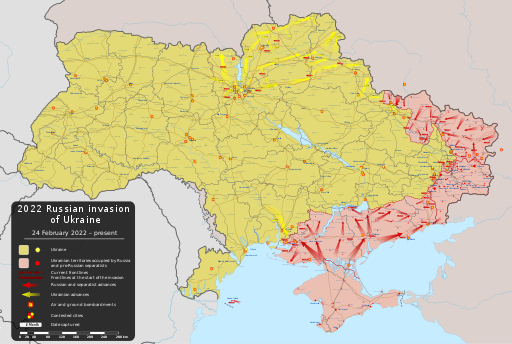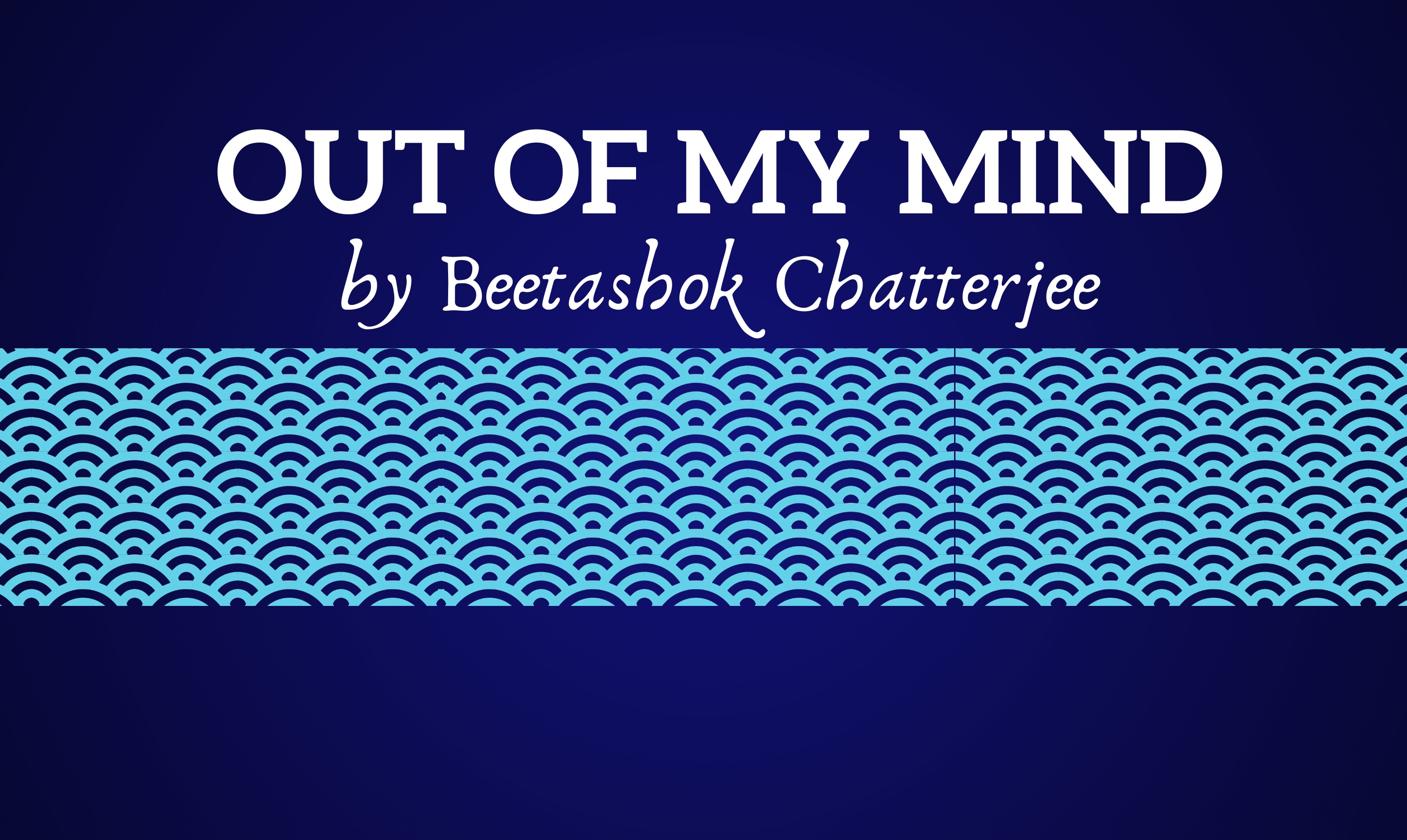The war between Russia and Ukraine goes on as I write this, entering its third month with no signs of stopping. Incalculable damage in terms of lives and property lost—especially innocent lives in the crossfire—setting both countries back by a decade. Sadly, I have visited both countries, sailed with seamen of both nationalities and have found no difference between the two.
As a layperson, I have been trying to figure out how matters reached this stage where the dogs of war were let loose. True, things had been on the boil for years, but never did I imagine that Vladimir Putin would actually attack Ukraine, what with the bluster of NATO (North Atlantic Treaty Organization) countries warning him of consequences. But he did, taking the whole world by surprise. The NATO countries then just stepped back and put their hands up. None of them wanted to risk putting their soldiers on the ground to fight Russia and get killed; none of them wanted to be held responsible for starting a World War. Ukraine was left to fend for itself.
Putin’s calculations were spot on; he had it all figured out. On 20 Feb the Winter Olympics in China ended. (It is said China requested him not to disrupt the event.). On 21 Feb Putin declared the eastern Ukranian regions of Donetsk and Luhansk independent of Ukraine. It was easy, as Separatist movements in these areas were already in place for years, and the majority of inhabitants is pro Russian. On 23 Feb the ‘independent' states of Donetsk and Luhansk officially asked Russia for help. On 24 Feb Putin invaded Ukraine in accordance with Chapter 7 of the UN Charter, calling it a Special Military Operation (SMO). Ironically, Chapter 7 of the UN Charter allows this. The UN allows military and non-military action by a member state to ‘restore international peace and security.’ (Does it mean we can attack Pakistan in the same way if Baluchistan asks India for help against oppression?)
Earlier in 2014, when the trouble began, Russia had separated Crimea in the southeast from Ukraine. Russian soldiers without insignia had seized the Crimean Parliament. It had then organized a widely criticized referendum, which went in favour of Crimea joining Russia. Russia thus annexed Crimea, gaining control of the Azov Sea. The whole world watched and did nothing.

Image source: Wikimedia Commons
Let us go back a bit. The USSR (Union of Soviet Socialist Republics) was formed in 1922, a big republic of 15 countries, including Ukraine. In 1991 Ukraine broke away, as did all the member states. From 1991 to 2014 all was going well there. But Putin was still smarting from wounds inflicted by perestroika (restructuring) and glasnost (openness) in 1991 that had destroyed the idea of a Soviet Union of Republics. It is apparent he dreams of a Soviet Union once again under Moscow’s thumb.
In 1996 Ukraine gave all its nuclear bombs to Russia under the Nuclear Non-Proliferation Treaty (NPT). Had it not, the scenario would have been different today—Ukraine would have been a nuclear power. From 2010 to 2014 Viktor Yanukovych, fiercely pro Russian, was President of Ukraine. In accordance with Russia’s wishes, he declined the offer by the European Union (EU) of a Free Trade Agreement with Europe. This caused protests all over the country from Nov 2013 to Feb 2014, resulting in his fleeing and seeking asylum in Russia. It became clear to subsequent Ukraine governments that the majority wanted to align with Europe, not Russia. Russia didn't like this at all. Incidentally, Ukraine's population is 30% Russian. Eastern Ukraine shares a border with Russia and is pro Russia. As you go west, the population is more native Ukranian. Western Ukraine is biased towards Europe and anti Russian.
Why did Russia not want Ukraine to join EU? Because Putin perceived the Europeanization of Ukraine as a threat—a fundamental challenge to his model of authoritarian rule. He also feared the USA would then exert its influence once it was in EU and make it a member of NATO. NATO is not a pensioner’s recreation club. Formed in 1949, it is currently an alliance of 30 western nations to protect democratic nations from potential attacks by the Soviet Union, now mainly Russia. NATO unites in time of war against a common enemy. If any member state of NATO is attacked, all 30 members can unite against the aggressor. Now if Ukraine becomes a NATO member, then any army of a NATO country can enter Ukraine. Therefore it is possible to have US military bases in Ukraine along the border with Russia. If there is warfare between US and Russian troops along the border, it is an open invitation for all 30 NATO countries to join the war against Russia.
Therefore Putin demanded three conditions from NATO failing which he threatened to invade Ukraine—that NATO forces in Poland and the Baltic nations be removed, that Ukraine never be accepted as a member of NATO and that US missiles placed in Europe be disarmed. Uncle Sam rejected all these demands. You’ve probably noticed that nothing was asked of Ukraine. Ukraine was just a pawn in the game. But the majority of Ukrainians still wanted to join the EU. So in Jan 2016, Ukraine joined the Deep and Comprehensive Free Trade Area (DCFTA) with EU. On 28 Feb this year, shortly after the Russian ‘invasion’ (SMO?), Ukrainian President Volodymyr Zelenskyy officially signed an EU membership application for his country.
There was another issue. Russia is the world’s largest exporter of natural gas. . It exports petroleum and gas through pipelines running through Ukraine to Western Europe. In 2014 under NATO pressure, Ukraine asked Russia to pay a rent of USD 33 billion per year for this facility, to which Russia agreed. So for a neighbouring country to take billions of dollars from it, and then break ties to join EU and NATO—that was just not acceptable to Putin.
There—that’s the gist of the history behind this war.
Ukraine is now doing its best to battle the giant. It has a good army, and has kept the Russians at bay. But for how long? It is surrounded by the Russian military on three sides. On the northwest border, Russia has its army planted in Belarus. It is attacking from the east (Donetsk and Luhansk), southeast (Crimea & the Azov Sea) and of course from the northeast over its entire border with Ukraine. But remember it is a SMO, not an invasion! The UN says so. Pretty much what the US called its operations when it invaded Afghanistan, Iraq, Syria, Libya, Vietnam etc. What is sauce for the gander is sauce for the goose.
Ukraine is not a member of NATO yet. If it loses the war, Russia will ensure that it will never happen. Russia cannot afford to allow Ukraine to become a member of NATO at any cost. (Imagine if Russia signs a treaty with Canada, Mexico & Cuba and places its missiles on their borders with the US, and builds military bases along the US border, will Uncle Sam tolerate it?)
In all of this, India has maintained a non-aligned stance, abstaining from voting to suspend Russia from the UNHRC. India will not go against Russia, much as the rest of the world may disapprove of one nation invading a smaller one for its own selfish purpose. If India does, there is the risk of Russia, China & Pakistan cosying up to each other against us. Ukraine is no friend either. It did not support India in the past during our nuclear testing in 1998, on Kashmir and on getting a permanent seat in the UN Security Council. Ukraine has also been supplying arms to Pakistan. And the US? The US is a fickle friend at best. It cannot be relied upon to help us against China or Pakistan. So a neutral stance is good, I think. In matters like these, the head should rule the heart of the Government.
So who wins here? Is it Putin who will probably overpower Ukraine, ‘demilitarize’ it and once again set up a puppet government in Kyiv? Maybe eye smaller neighbouring countries next to bring back into the fold of the Soviet empire? Is it US President Joe Biden who, without firing a bullet, is quietly watching the Russian economy destroy itself in a war that its people didn’t sign up for? Is it Ukraine that has won the sympathy and hearts of the world for its dogged resistance against a large, brutal enemy? I don’t know.
I know who has lost, though. The thousands of innocent Ukranian civilians who are no more. Over 10,000 civilians have died in the Ukranian port city of Mariupol. Hundreds were killed as two Russian rockets hit a train station in Kramatorsk. More than 400 bodies, many of them tied and shot at close range in an apparent act of genocide, found in the streets of Bucha. Hundreds of Ukranian women raped by Russian soldiers. Two year old Ukranian babies who should not be living in basements or bomb shelters, starving. For these alone, Putin should be tried like a war criminal. On the other side, there are thousands of Russians standing in breadlines and in queues outside banks and ATMs, their money and supplies exhausted. Not to mention the tens of thousands of soldiers on both sides who have died in the past two months. They are the losers.
‘There was never a good war, or a bad peace’, said Benjamin Franklin. When we look at the history of war and peace we see this simple truth at the heart of the matter.
Beetashok Chatterjee is the author of ‘Driftwood’, a collection of stories about Life at Sea and ‘The People Tree’, another collection of stories about ordinary people with extraordinary experiences. A retired merchant ship’s captain by profession, this old sea dog lives in New Delhi with his memories of living more than 40 years on the waves.
His books are available on Amazon. Click here.


Comments